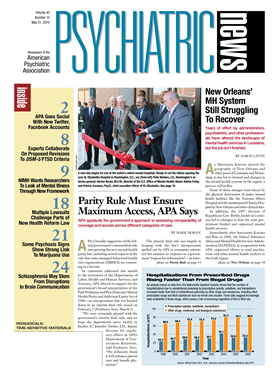The rate of attempted and completed suicide did not differ between pediatric patients who were started on selective serotonin-reuptake inhibitors (SSRIs) and those taking tricyclic antidepressants, a large observational study has shown.
All antidepressants are required by the Food and Drug Administration (FDA) to carry a boxed warning in their labels regarding an increased risk of suicidality, including suicidal thoughts and behaviors, for children and young adults up to age 24. This risk was initially reported in patients using paroxetine, but the FDA decided in 2004 to mandate the warning on suicidality for all antidepressants, including tricyclics.
The study, published online in Pediatrics on April 12, indicates that the total rate of suicidal acts, including attempted and completed suicides, within one year of antidepressant initiation was not significantly different between 10- to 18-year-old patients who started on SSRIs and those who started on tricyclics.
Because attempted and completed suicides are rare events, a large population base is needed to conduct a meaningful risk analysis. The authors, led by Sebastian Schneeweiss, M.D., Sc.D., an associate professor of medicine at Harvard Medical School and vice chief of the Division of Pharmacoepidemiology and Pharmacoeconomics at the Brigham and Women's Hospital, examined provincial health care data on nearly 21,000 pediatric patients in British Columbia within a nine-year period between January 1, 1997, and December 31, 2005. All patients included in the analysis were diagnosed with depression and were taking an antidepressant at the time due to a suicide-related hospitalization.
Within the first year of using an antidepressant, 266 youths made attempts, and three died of suicide. The incidence was calculated at approximately 27 suicidal acts per 1,000 person-years. Suicide attempts and suicides were identified by ICD-9 and ICD-10 diagnostic codes.
The authors found no statistically significant difference in the risk of suicidal acts between patients who started on SSRIs and those who started on tricyclics. Nor were there significant differences in the risk of suicidal acts within the SSRI drug class in the comparisons among citalopram, fluvoxamine, paroxetine, sertraline, and fluoxetine.
The authors also found that most of the suicidal acts took place within the first six months after antidepressant initiation.
“The interpretation of these findings is limited by a number of methodological factors,” David Fassler, M.D., commented to Psychiatric News. For example, the authors evaluated only pediatric patients who were hospitalized as a result of attempted suicide or completed suicide, but “research has demonstrated that the majority of children and adolescents with suicidal ideation, self-harm, and even suicide attempts are never hospitalized,” he noted.
Fassler is a child and adolescent psychiatrist and a clinical professor of psychiatry at the University of Vermont College of Medicine. He is also the APA secretary/treasurer.
Fassler pointed out several other limitations of this study. The authors included patients with a diagnosis of depression but not anxiety disorders, although anxiety symptoms may have an impact on suicidal behaviors different from that of depression. Also, they did not take into consideration the changes in prescribing patterns before and after the regulatory warnings between 2003 and 2005, which have been highlighted in other studies. These factors “could easily have influenced the results in a variety of ways,” said Fassler.
Despite the FDA warnings, the extent to which antidepressants may induce suicidal thoughts and behaviors is still not well established, especially among adolescents who are at high risk for suicidal behaviors without treatment because of an underlying mental illness. After the regulatory warnings were issued, epidemiologists saw a spike in youth suicide that may or may not be associated with decreased use of these medications (Psychiatric News, October 5, 2007; October 3, 2008).
This current study does not answer the question of whether or how much antidepressants increase suicidal behaviors in children and adolescents, as the authors did not compare the incidence of suicide attempts and suicides in young people who were not treated with antidepressants with that of those who were treated with antidepressants, Fassler suggested. He hopes that future large-scale, longitudinal studies will fully address these issues, including the public-health consequences of the boxed warning.
The study was funded by the National Institute of Mental Health.
